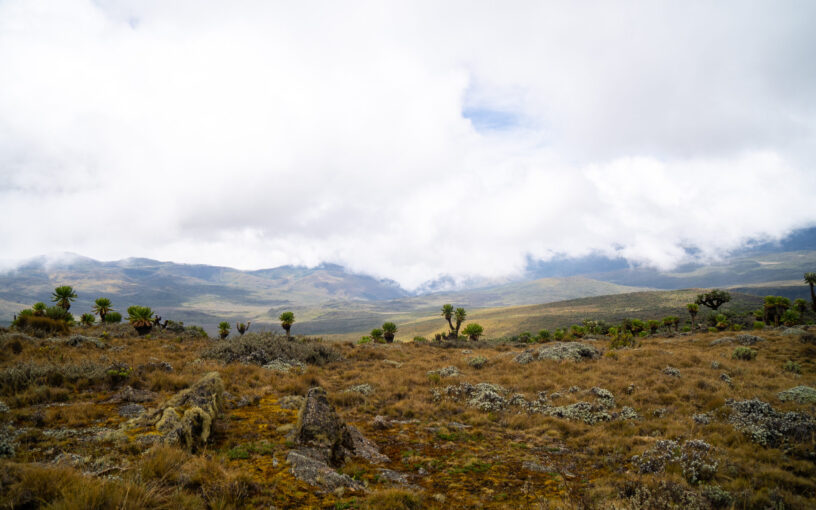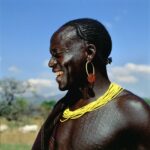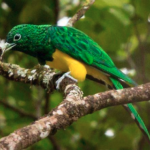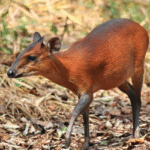
EXPLORING UGANDA’S MOUNTAIN FLORA: A GUIDE TO HIGH-ALTITUDE VEGETATION AND ECOTOURISM
Uganda, famously known as the “Pearl of Africa,” is home to some of the continent’s most breathtaking mountain landscapes. The Rwenzori Mountains (peaking at 5,109m) and Mount Elgon (4,321m) host various vegetation zones, each uniquely adapted to extreme high-altitude conditions. These mountains are a haven for rare and endemic plant species and a bucket-list destination for hikers, nature lovers, and scientists.
For tourists, exploring Rwenzori Mountains National Park and Mount Elgon National Park offers an unforgettable experience, showcasing Uganda’s rich biodiversity and stunning scenery. This guide highlights the fascinating flora of these high-altitude regions, their ecological importance, and how they contribute to Uganda’s thriving tourism industry.
Vegetation Zones of Uganda’s High Mountains
The Rwenzori and Mount Elgon mountains feature distinct vegetation bands that change with elevation, each supporting specialized plant and animal life.
The Mountain Forest (Tropical Rainforest) Zone
Found at elevations up to 2,800 meters, it forms a lush, biodiverse world teeming with unique flora and fauna. Towering trees like the African redwood (Hagenia abyssinica) and East African yellowwood (Podocarpus milanjianus) dominate the canopy, reaching heights of 30-40 meters and creating a multi-layered ecosystem.

Beneath these giants thrives an understory of remarkable plants, including the giant St. John’s Wort (Hypericum lanceolatum) with its bright yellow flowers, delicate tree ferns (Cyathea manniana), and wild coffee plants (Coffea eugenioides)—ancestors of cultivated coffee varieties.

The forest floor is carpeted with mosses, ferns, and colorful Impatiens species, while Lobelia gibberosa and various Begonia species add splashes of color to the shaded environment. This rich vegetation supports an incredible array of wildlife, from chimpanzees feasting on wild figs to the striking Rwenzori turaco birds nesting in the canopy.
For visitors, this zone offers an unforgettable introduction to Uganda’s mountain ecosystems. Birdwatchers can spot rare species like the Rwenzori Batis and Grauer’s Warbler, while primate enthusiasts may encounter troops of black-and-white colobus monkeys leaping through the Albizia trees.

The cool, moist air carries the earthy scent of decomposing leaves and the sweet fragrance of forest flowers, creating an immersive sensory experience. As the starting point for most mountain treks, this forest zone provides crucial shade and shelter before hikers ascend into the bamboo zone, with its towering stands gradually giving way to the more open habitats at higher elevations. The transition between these zones offers a fascinating lesson in how plants adapt to changing environmental conditions, making it a living classroom for ecotourists and nature lovers alike.
Bamboo Vegetation Zone (~2,800m to 3,300m)
The Bamboo Vegetation Zone, found between 2,800 and 3,300 meters on both the Rwenzori Mountains and Mount Elgon, presents a striking transition from the montane rainforest below. This zone is overwhelmingly dominated by thick stands of African Alpine Bamboo (Yushania alpina), which forms nearly impenetrable forests with stems reaching up to 12 meters in height. These fast-growing bamboos create a unique ecosystem where their fallen leaves form a thick, spongy mat on the forest floor, aiding in water retention and soil stabilization. Among the bamboo, scattered tree species like the Rwenzori Hypericum (Hypericum revolutum) with its yellow star-shaped flowers and the broad-leaved Schefflera polysciadia add diversity to the landscape. The zone also hosts various fern species, including the striking Pteris cretica, which thrive in the moist, shaded understory created by the dense bamboo canopy. This vegetation provides critical habitat for wildlife, including golden monkeys in the Rwenzoris and various bird species like the Rwenzori double-collared sunbird that feed on nectar from flowering plants growing in bamboo clearings.

On Mount Elgon, the bamboo zone displays slightly different characteristics, with the bamboo stands being more interspersed with giant heathers (Erica arborea) and other shrubs. Here, visitors can observe the interesting phenomenon of bamboo stems bending under the weight of thick mosses and lichens, particularly Usnea beard lichens that drape from the branches. The zone serves as an important water catchment area, with the bamboo roots forming a natural filtration system that maintains water quality for streams flowing down the mountain. For researchers, this zone offers fascinating study opportunities regarding how bamboo’s rapid growth cycle (flowering only every 30-40 years) affects the entire ecosystem’s dynamics. Trekkers passing through this zone often remark on the surreal experience of walking through the constantly swaying bamboo “tunnels,” where sunlight filters through in dappled patterns and the hollow stems create eerie knocking sounds in the wind. The transition out of the bamboo zone is marked by the gradual appearance of giant heathers and lobelias, signaling the approach to the higher altitude heath and moorland zones.
Heath Zone (~3,300m to 4,000m)
The Heath Zone, spanning elevations between 3,300 and 4,000 meters on both the Rwenzori Mountains and Mount Elgon, presents a dramatic shift in vegetation as treeline gives way to a rugged landscape of hardy shrubs and wind-sculpted plants. This zone is dominated by giant heathers, particularly Erica arborea and Philippia trimera, which form dense, gnarled thickets with twisted trunks adapted to withstand fierce mountain winds. These evergreen shrubs, often covered in lichens and mosses, display remarkable adaptations to the harsh conditions, including small, leathery leaves that minimize water loss and a cushion-like growth form that retains heat.

Among the heathers, visitors can find the striking Rwenzori gladiolus (Gladiolus ruwenzoriensis) with its vibrant red flowers and the unusual Helichrysum stuhlmannii, whose silver-haired leaves glisten in the sunlight. The ground is frequently carpeted with tussocks of Carex runssoroensis, a tough sedge that forms dense clumps, providing shelter for small mammals and insects. This zone serves as a critical transition between the bamboo forests below and the surreal afro-alpine zone above, with vegetation becoming progressively more stunted as altitude increases.
For trekkers, the Heath Zone offers some of the most visually striking landscapes in Uganda’s high mountains. During flowering seasons (typically July to September), the slopes transform into a tapestry of colors as the heathers burst into bloom, with Erica arborea displaying delicate pink or white bell-shaped flowers that contrast beautifully against the muted greens and grays of the surrounding vegetation. The zone’s open nature provides breathtaking panoramic views, with twisted, bonsai-like trees framing vistas of towering peaks and deep valleys. Botanists are particularly drawn to this zone to study unique species like the Rwenzori everlasting flower (Helichrysum guilelmii), which has evolved woolly leaves for insulation against freezing temperatures. As hikers ascend through this zone, they’ll notice the gradual appearance of giant lobelias (Lobelia wollastonii) and groundsels (Dendrosenecio adnivalis), heralding the approach of the even more extreme afro-alpine zone. The Heath Zone’s ecological importance cannot be overstated—it acts as a natural water reservoir, with the dense vegetation slowing runoff and releasing moisture gradually, while also providing critical habitat for endemic bird species like the Rwenzori batis and mountain buzzards that nest in the stunted trees.
Afro-Alpine Zone (~4,000m to 4,500m)
The Afro-Alpine Zone, spanning 4,000 to 4,500 meters on Uganda’s highest peaks, presents one of Africa’s most extraordinary botanical landscapes. This otherworldly ecosystem is dominated by giant forms of lobelias and groundsels that have evolved remarkable adaptations to survive the extreme conditions. The iconic Giant Lobelia (Lobelia wollastonii) towers up to 3 meters tall with its striking candelabra-like flower spikes, while its rosette of thick leaves forms a natural water reservoir that collects dew and rainwater.

Equally impressive are the giant groundsels (Dendrosenecio adnivalis), which resemble prehistoric trees with their thick, woody stems covered in dense, hairy leaves that provide insulation against freezing temperatures.

These bizarre-looking plants grow alongside equally specialized species like the cushion-forming Helichrysum stuhlmannii, whose silver-furred leaves reflect intense UV radiation, and the delicate Alchemilla subnivalis, whose intricate leaves channel water droplets to their roots. The zone also hosts rare endemic species like the Rwenzori Buttercup (Ranunculus ruwenzoriensis), which blooms bright yellow against the rocky terrain, and mosses like Grimmia spp. that form dense carpets on boulders.
For adventurers, the Afro-Alpine Zone offers an unparalleled hiking experience through what feels like a botanical wonderland from another planet. The surreal sight of giant groundsels silhouetted against swirling mists creates extraordinary photographic opportunities, particularly at sunrise when their woolly leaves glisten with frost. This fragile ecosystem reveals its full splendor during the short flowering season (July-August), when the normally stark landscape erupts with color from alpine flowers like the vibrant red Mimulus ruwenzoriensis and purple Swertia crassiuscula. The zone’s unique microclimate creates “frost hollows” where specialized plants like Carex runssoroensis survive in protected pockets. As hikers traverse this zone, they witness one of nature’s most dramatic examples of adaptation, where plants have evolved woolly coverings, water-storing trunks, and antifreeze compounds to survive nightly freezes and intense daytime radiation. The transition from the heath zone below is stark – within just a few hundred meters of elevation gain, trees disappear completely, replaced by these magnificent giant plants that seem to defy the harsh mountain environment. Scientific researchers continue to make discoveries here, studying how these plants survive at altitudes approaching the limit for vascular plant growth, making every expedition potentially groundbreaking.
Glacier Zone (Above ~4,500m)
The Glacier Zone above 4,500 meters represents one of Earth’s most extreme environments, where only the hardiest organisms can survive. In this frozen realm, vegetation is limited to crustose lichens like Xanthoria elegans that cling to bare rock faces, their bright orange and yellow hues contrasting starkly against the ice. Hardy mosses such as Grimmia spp.

Form sparse cushions in protected crevices, while Usnea beard lichens dangle from occasional rock outcrops. These simple plants have developed extraordinary survival strategies – producing natural antifreeze compounds and entering suspended animation during prolonged freezes. The zone’s most remarkable botanical feature is the dark-colored cryptoendolithic algae that live inside porous rocks, creating barely visible greenish stains on stone surfaces where no other life exists.

For adventurous trekkers, this zone offers a rare chance to witness equatorial glaciers before they disappear due to climate change. The Margherita Glacier in the Rwenzoris and smaller ice fields on Mount Elgon present surreal landscapes where the last remnants of plant life cling tenaciously at the absolute edge of existence. Scientists study these extreme-adapted species for insights into how life might survive on other planets, while mountaineers face the ultimate challenge of navigating this barren, high-altitude wilderness. The complete absence of vascular plants above certain elevations creates a stark transition from the bizarre giant lobelias of the afro-alpine zone to this utterly minimalistic ecosystem where life exists only in its most basic forms.
Why Tourists Should Visit Uganda’s Mountain Flora
Uganda’s mountain flora offers visitors a truly unique biodiversity encounter found nowhere else on Earth. The Rwenzori Mountains and Mount Elgon serve as living museums of rare and endemic plant species, from the prehistoric-looking giant lobelia to the otherworldly giant groundsel. These “botanical islands” in the sky have evolved in isolation, creating species found nowhere else on the planet, making every sighting special. The mountains are particularly famous for their afro-alpine massive versions of lobelias and senecios that tower over hikers in the high-altitude zones, creating landscapes unlike any other in Africa.
The mountains offer some of Africa’s most spectacular hiking experiences through dramatically changing vegetation zones. Trekkers can journey from lush tropical rainforests filled with wild coffee plants and giant ferns, through eerie bamboo tunnels, to surreal alpine moorlands dotted with giant plants. Each elevation change reveals completely new ecosystems, with the full spectrum visible on multi-day hikes. The Rwenzori’s famous “Mountains of the Moon” provide particularly dramatic scenery, where glaciers peek above bizarre plant formations. Mount Elgon’s vast caldera offers equally stunning vistas with its unique combination of volcanic landscapes and high-altitude vegetation.
Birdwatchers and wildlife enthusiasts will find these mountains exceptionally rewarding. The lower slopes teem with rare primates like chimpanzees and colobus monkeys moving through the canopy of ancient trees. Over 200 bird species inhabit these zones, including 19 Rwenzori endemics like the striking Rwenzori Turaco with its vibrant plumage.
The alpine zones host specialized species like the Alpine Chat and Scarlet-tufted Malachite Sunbird that have adapted to high-altitude life. Early morning hikes often provide the best opportunities to spot these unique creatures against breathtaking mountain backdrops.
Photographers will discover endless inspiration in Uganda’s mountain landscapes. The play of light through misty valleys, the stark contrast of giant lobelias against rocky slopes, and the vibrant colors of alpine flowers create unforgettable images. The ever-changing weather conditions – from clear sunny mornings to dramatic afternoon cloud formations – ensure no two visits are ever the same. Sunrise over the giant groundsel forests and sunset lighting up the glaciers provide particularly magical moments for landscape photography. Even casual smartphone photographers return with stunning shots of these unique environments.

For those interested in science and conservation, these mountains offer front-row seats to important ecological processes. Researchers from around the world study how these plants adapt to extreme conditions, with potential applications from medicine to climate change resilience. Visitors can learn about ongoing conservation efforts to protect these fragile ecosystems while witnessing firsthand the impacts of climate change on the retreating glaciers. The mountains serve as natural laboratories where tourists can observe specialized plant adaptations like water-storing trunks, hairy insulating leaves, and natural antifreeze compounds – all developed to survive in these harsh, high-altitude environments.
Threats to Mountain Flora & Conservation Efforts
Challenges:
Uganda’s mountain ecosystems in the Rwenzori and Mount Elgon face severe threats from human activities and climate change. Deforestation is a major concern, as local communities cut down trees for charcoal burning, firewood, and agricultural expansion. The lower slopes of Mount Elgon and the Rwenzori foothills have seen significant forest loss due to illegal logging and land clearance for farming.

This destruction not only reduces biodiversity but also disrupts water catchment areas, leading to soil erosion and reduced river flows downstream. Additionally, human settlements encroaching on park boundaries put further pressure on these fragile habitats, as growing populations demand more land and resources.
Unsustainable harvesting of medicinal plants also degrades mountain vegetation where some communities rely on wild plants for traditional medicine, leading to overharvesting of rare species like Lobelia gibbera and Dendrosenecio.

Meanwhile, climate change is causing glaciers to retreat and temperature shifts that threaten cold-adapted flora. The iconic Giant Lobelias and Groundsels, which thrive in specific microclimates, are at risk as warming temperatures push their habitats higher, leaving them with nowhere to go.
To combat these threats, conservation efforts led by the Uganda Wildlife Authority (UWA) and local communities focus on reforestation, sustainable land-use practices, and eco-tourism initiatives. Programs like community-based forest restoration encourage planting native tree species, while alternative livelihood projects reduce reliance on charcoal and firewood. Strict park enforcement prevents illegal logging and encroachment, and education campaigns raise awareness about the ecological value of these mountains. Tourists can contribute by supporting responsible travel operators and conservation programs, ensuring Uganda’s mountain flora remains protected for future generations.
Conservation Efforts by UWA & Partners
The Uganda Wildlife Authority (UWA) and conservation partners are implementing impactful measures to protect the fragile mountain ecosystems of Rwenzori and Mount Elgon. Through community involvement, locals are being trained as eco-guides and conservation monitors, creating jobs while fostering environmental stewardship.

Sustainable tourism initiatives ensure that park fees directly fund habitat protection and anti-poaching patrols. Ambitious reforestation programs are restoring degraded slopes with native tree species, while ongoing research and monitoring track climate change impacts on high-altitude flora, providing crucial data for adaptive conservation strategies.
How Tourists Can Make a Difference
Visitors play a vital role in conservation by choosing eco-certified tour operators who prioritize low-impact practices. Strict adherence to park guidelines, like staying on marked trails, minimizes damage to sensitive vegetation. Supporting community enterprises through purchasing local crafts or hiring resident guides helps reduce dependence on destructive activities like charcoal burning. Sharing responsible travel experiences on social media raises global awareness about these unique ecosystems, encouraging more visitors to adopt sustainable practices. Every conscious decision contributes to preserving Uganda’s extraordinary mountain flora for future generations.
Conclusion
Uganda’s high-altitude flora is a treasure worth protecting. By visiting Rwenzori Mountains National Park and Mount Elgon National Park, tourists contribute to preserving these ecosystems. Whether you’re a hiker, photographer, or eco-enthusiast, Uganda’s mountains promise an adventure.




